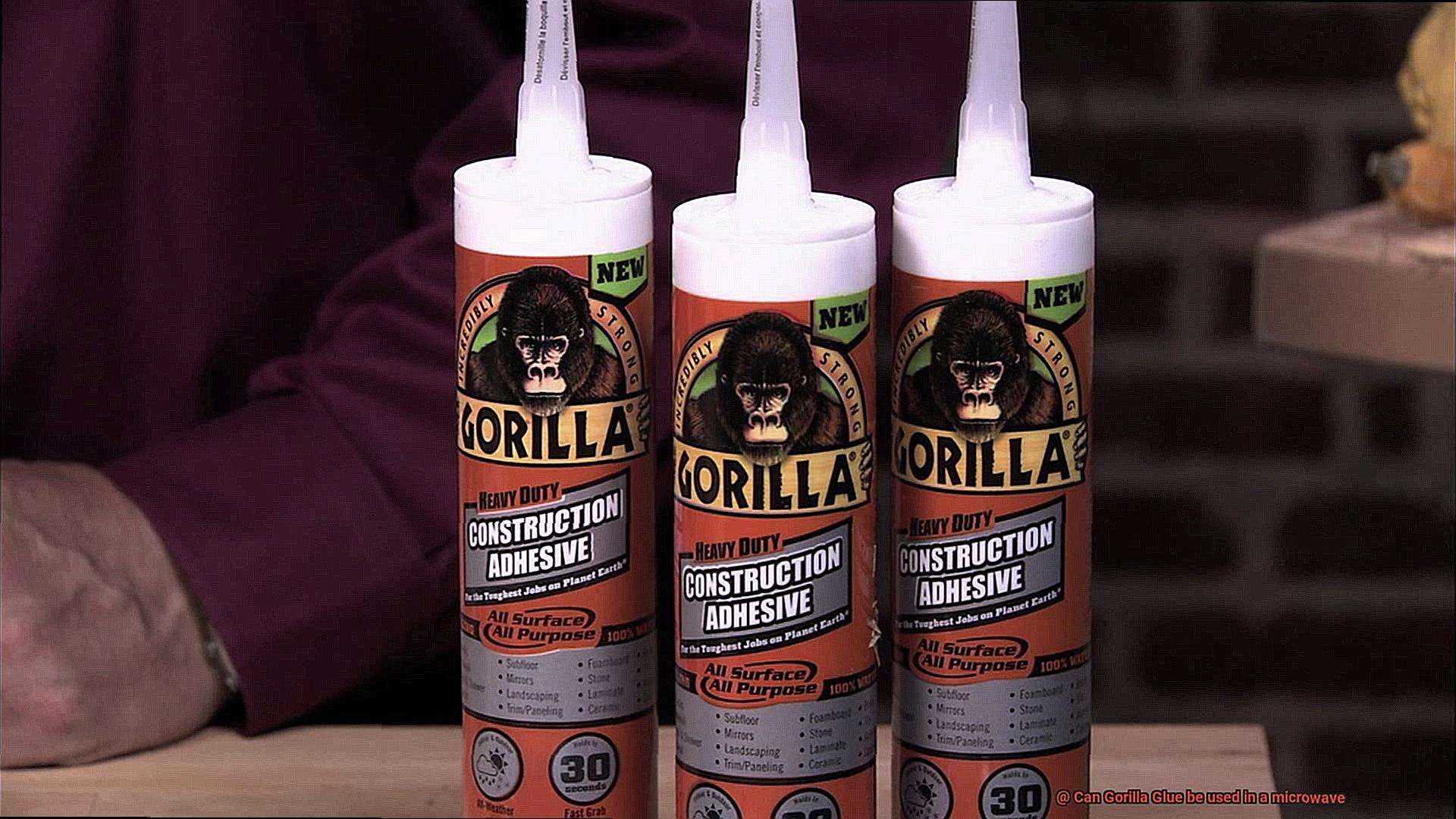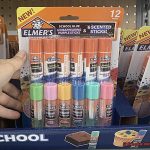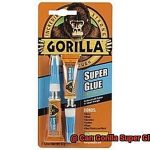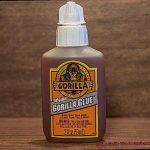Are you a DIY enthusiast who loves to experiment with new techniques and tools? Have you ever considered using your microwave to speed up the drying process of Gorilla Glue? Before you attempt this, let’s pause for a moment. Gorilla Glue is a high-strength adhesive that has gained popularity among crafters and builders alike due to its ability to bond items quickly and permanently. However, when it comes to using Gorilla Glue in a microwave, things can get a bit complicated.
Gorilla Glue is formulated with a unique polyurethane blend that requires moisture to activate it. In contrast, microwaves use heat to dry and harden substances. Therefore, the question arises: can you use Gorilla Glue in a microwave? The answer is no.
In this blog post, we’ll delve into the reasons why using Gorilla Glue in a microwave is not recommended for curing or drying purposes. We’ll also explore how Gorilla Glue works, what it’s composed of, and which projects it’s most suitable for. If you’re curious about the compatibility of Gorilla Glue with microwaves, then this blog post is perfect for you. So let’s jump right in and discover more about this fascinating topic.
What is Gorilla Glue?
Contents
Then, it’s time to discover Gorilla Glue, a polyurethane-based adhesive that has been a go-to solution for household repairs and DIY projects since 1994.
Gorilla Glue’s secret lies in its unique ability to bond with almost any material, from wood and metal to ceramics and glass. And once it bonds, it’s there to stay thanks to the exothermic chemical reaction that causes the glue to expand and harden into a strong bond – perfect for even the most challenging of projects.

But Gorilla Glue isn’t just one-size-fits-all. It comes in different forms, including multi-purpose glue, super glue, wood glue, and epoxy. Each type has specific properties and uses, but all share the same strength and durability that Gorilla Glue is known for.
However, it’s important to note that Gorilla Glue isn’t suitable for every situation. It should not be used as a food-safe adhesive or exposed to high temperatures such as those found in microwaves or ovens. When exposed to heat, Gorilla Glue begins to break down and lose its adhesive properties. This means that if you were to use Gorilla Glue in a microwave, it would likely break down and fail to bond properly. Additionally, the heat and electromagnetic waves in a microwave can cause the glue to bubble and expand, which could cause damage to the microwave itself.
So what should you use instead? If you need to bond materials together that will be exposed to high temperatures, it’s best to choose an adhesive that is specifically designed for that purpose. Epoxy or cyanoacrylate (also known as super glue) are two examples of adhesives that can withstand heat and are safe for use in microwaves or other high-temperature environments.
Why Should You Not Use Gorilla Glue in the Microwave?
You may want to think twice before using it in your microwave. As an expert in this matter, let me tell you why.
Firstly, Gorilla Glue is made from polyurethane, a type of plastic that can release harmful fumes when heated. Inhaling these toxic fumes can cause respiratory problems, headaches, and even nausea. Not only that, but it can also damage the interior of your microwave. So the next time you’re tempted to use Gorilla Glue in the microwave, think about the health risks and potential damage to your appliance.
Secondly, using Gorilla Glue in the microwave can also lead to fires. Polyurethane is a flammable material, and when heated, it can ignite and cause a dangerous fire that can damage your microwave and even your home. No DIY project is worth putting your safety at risk.
So what’s the solution? Instead of using Gorilla Glue, opt for specialized adhesives like epoxy or cyanoacrylate that are safe for use in the microwave and won’t release toxic fumes or cause fires. Always read labels and follow manufacturer instructions when using any product in or near a microwave.
The Dangers of Using Gorilla Glue in a Microwave

While it may seem like a quick fix, the consequences can be severe and affect not only your appliance but also your health.
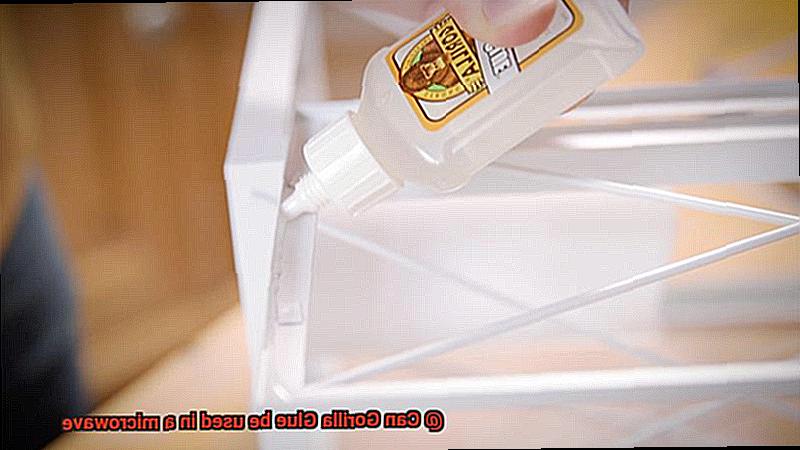
Let’s take a closer look at why using Gorilla Glue in a microwave is such a hazardous decision.
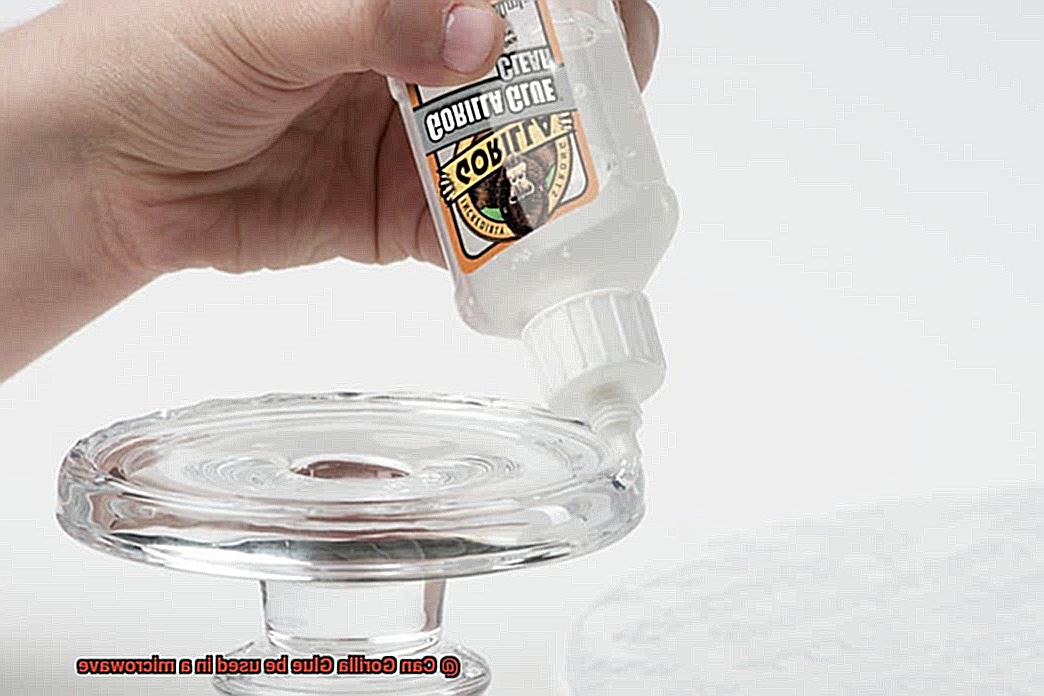
First and foremost, when heated, Gorilla Glue releases toxic fumes that can cause respiratory problems, nausea, and dizziness. Nobody wants to inhale harmful chemicals while trying to reheat their food.
Secondly, when exposed to high temperatures, this adhesive rapidly expands and can cause an explosion within the microwave, which can lead to irreparable damage and even injury.
Lastly, it’s worth noting that Gorilla Glue is not designed to withstand high temperatures and can break down over time, releasing harmful chemicals into the air. The risk of exposure to these dangerous chemicals is simply not worth it.
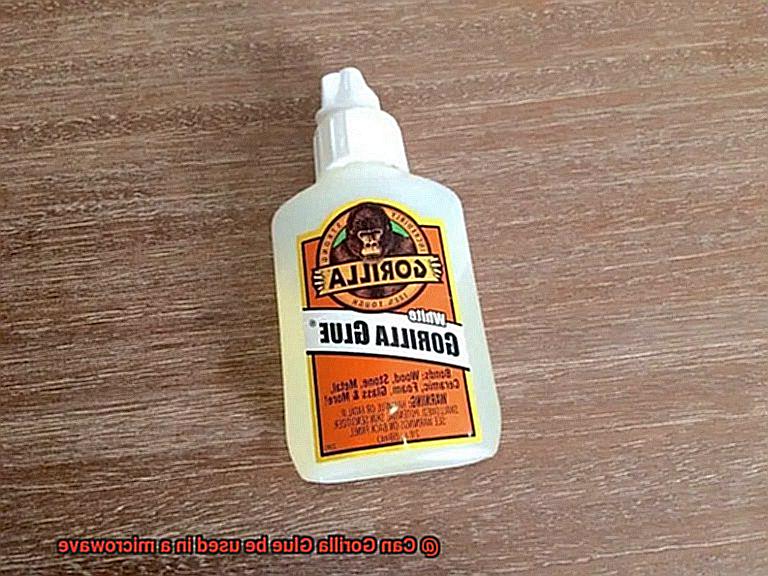
In summary, using Gorilla Glue in a microwave is not only unnecessary but also incredibly risky. Instead, opt for adhesives specifically designed for high-temperature environments. Always read the manufacturer’s instructions carefully before using any type of adhesive and avoid using it in ways it was not intended for.
Alternatives to Gorilla Glue for High-Temperature Environments
If you’re working in a high-temperature environment, Gorilla Glue may not always be the best option. While it’s known for its strength and versatility, it’s not designed to withstand extreme heat, leaving you with a weak bond that could fail under pressure. Don’t worry though, there are alternatives available that are specifically formulated to withstand the heat.
First up, we have epoxy. This two-part adhesive is a favorite among DIY enthusiasts and professionals alike. When mixed together, the resin and hardener form a strong and durable bond that can withstand temperatures up to 300 degrees Fahrenheit. That makes it perfect for bonding materials near ovens or in automotive applications.
If you need an adhesive that can handle even higher temperatures, then silicone adhesive is the one for you. This flexible and heat-resistant adhesive can withstand temperatures up to 500 degrees Fahrenheit. It’s commonly used in automotive applications, such as bonding exhaust components. So if you’re looking for an adhesive that can keep up with your high-performance vehicle, silicone is the way to go.
For those who prefer natural alternatives, soy-based adhesive is a great option. Made from soybean oil, this non-toxic and environmentally friendly adhesive can withstand temperatures up to 200 degrees Fahrenheit. It’s often used in woodworking applications where high-temperature resistance is required. Plus, it’s easy to clean up with just soap and water.
How to Choose the Right Adhesive for Your Project
Choosing the right adhesive for your project can make all the difference when it comes to achieving a strong and long-lasting bond. To help you make the best choice, we have put together some tips on how to choose the right adhesive for your project.
Identify the Materials
Before selecting an adhesive, it’s important to identify the materials you will be bonding together. Different adhesives work better with certain materials than others, so it’s important to select an adhesive that is specifically designed for the materials you will be using. For example, if you’re bonding wood, you’ll want to choose an adhesive that is designed specifically for use with wood.
Consider the Strength of Bond Required
The strength of the bond required is another important factor to consider when choosing an adhesive. Some adhesives are designed for temporary bonding, while others are meant to create a permanent bond that will last for years. If you need a strong, long-lasting bond, be sure to choose an adhesive that is designed for heavy-duty applications.
Think About the Environment
The environment in which your project will be used is another crucial consideration when selecting an adhesive. If your project will be exposed to extreme temperatures or moisture, you’ll want to choose an adhesive that can withstand these conditions. Similarly, if your project will be exposed to UV light, select an adhesive that is UV resistant.
Look at Application Method
The application method is another factor to consider when choosing an adhesive. Some adhesives come in spray form for easy application, while others require a brush or applicator. Select an adhesive that can be applied easily and accurately for best results.
Check for Special Features
Finally, consider any special requirements for your project and look for adhesives with specific features that may be useful. For example, some adhesives are waterproof or water-resistant, while others are designed for use on flexible materials.
Tips for Safely Working with Adhesives
Adhesives can be incredibly useful for various tasks, from crafting to repairs. However, it is crucial to prioritize safety when working with them. As an expert on the topic, I have compiled some tips to help you work safely with adhesives.
Follow the manufacturer’s instructions
Each adhesive product has unique instructions that should be followed carefully. This will ensure that you are using the product correctly and taking any necessary safety precautions. Be sure to read the label carefully before using the adhesive.
Wear protective gear
Adhesives can contain harsh chemicals that may cause skin irritation or eye damage upon contact. To protect yourself, always wear gloves and eye protection when handling adhesives. This will minimize your risk of injury and help you work safely.
Work in a well-ventilated area
Many adhesives release fumes that can be harmful if inhaled. To prevent exposure to potentially dangerous fumes, work in a well-ventilated area. Open windows or doors or use a fan to circulate air.
Keep adhesives away from heat sources
Adhesives can be flammable and should be kept away from heat sources like stoves, heaters, and open flames. This will reduce the risk of fire and help you work safely.
Clean up spills immediately
If there is a spill of adhesive, clean it up immediately using a damp cloth or paper towel. Do not let the adhesive dry as it will become much harder to remove later and pose a slipping hazard.
ooZzUpYV9vA” >
Conclusion
In conclusion, it’s a big no-no to use Gorilla Glue in a microwave. The unique polyurethane blend used in its formulation requires moisture to activate, and microwaves use heat to dry and harden substances. This can cause Gorilla Glue to break down and lose its adhesive properties, leaving you with a mess instead of a bond.
But that’s not all – heated Gorilla Glue releases toxic fumes that can cause respiratory problems and nausea. And if that’s not enough to deter you, polyurethane is a flammable material that can ignite when heated, leading to potential fires.
To avoid these risks, opt for adhesives specifically designed for high-temperature environments like epoxy or cyanoacrylate. These adhesives can withstand heat and are safe for use in microwaves or other high-temperature environments.
When selecting an adhesive, it’s crucial to consider the materials you’re bonding together, the required strength of bond, the environment in which your project will be used, application method, and special features. Taking these factors into account will help you choose the right adhesive for your project.
Working with adhesives requires caution and safety precautions such as following manufacturer instructions, wearing protective gear like gloves and eye protection, working in a well-ventilated area, keeping adhesives away from heat sources, and cleaning up spills immediately.
By following these tips and choosing the right adhesive for your project, you’ll achieve a strong and long-lasting bond without putting yourself or your appliances at risk.

